Start the year off right by ensuring that you’re properly representing your BACB certification status. To learn why it’s so important, how to do it, and more, read our latest blog post, How to Represent Your BACB Certification Status.
Tag: Blog
How to Represent Your BACB Certification Status

What’s in a name? When it comes to representing your certification status, the answer is everything.
At some point, you’ve heard us say “Be sure to properly represent your BACB certification status.” But what does that mean? What’s the “proper” way to do it? That’s what we plan to answer in this blog, but here’s the gist of it:
When you refer to your BACB certification, you must refer to its status—whether active, inactive, or somewhere in between—accurately.
It might surprise you how often this comes up in day-to-day life. You refer to your certification status when chatting with friends about your current studies or career. It’s mentioned when you work with peers, clients, parents/guardians, and employers in classrooms and clinical settings. You write it on your resume, job applications, and billing authorizations. It even crops up when you’re training, supervising, or giving lectures.

So, here’s another question for you, one that has echoed through school halls and study rooms for centuries: Why does this matter? The truth is that misrepresentation can have real-life consequences, even if done accidentally. In just a minute, we’ll outline how to accurately represent your certification status, but first, we need to discuss why it’s so important:
- Protecting consumers: Imagine that you’re an RBT applicant. You completed your 40-hour training, studied the materials, and scheduled your exam. Believing that you’ll soon pass, you put that you’re an “RBT Pending Examination” on your resume, and you get a job. Now you’re working with a client one-on-one, but you’re not certified. What if you don’t pass the exam? Uh oh. This is just one example of how misrepresentation can open a can of worms that’s potentially dangerous for you, your employer, and most importantly, your client.
- Adhering to BACB ethics requirements: As you know, all BACB applicants and certificants are bound by a code of ethics. These codes mandate that behavior analysts and technicians represent themselves accurately, and a violation could put your eligibility or certification at risk. For the details, check out what standard 2.08 of the Ethics Code for Behavior Analysts and standard 3.07 of the RBT Ethics Code (2.0) have to say about misrepresentation.
- Protecting the value of your certification: All BACB certification marks are registered with the United States Patent and Trademark Office (among other jurisdictions), and it’s crucial that they’re used correctly. As we mentioned in the July 2021 BACB Newsletter, if we fail to enforce our trademark rights, they could be jeopardized, and BACB certifications could lose their value. For specifics, check out the Guidelines for Use of BACB Intellectual Property.
How-To Guide
In this section, we’ll outline the dos and don’ts of representing your certification status. These guidelines are airtight to avoid any possible confusion, as confused clients and employers are not informed clients and employers. We hope that these examples make your life a little bit easier:
| Status | Guidelines |
|---|---|
| Active Certification |
As a reminder, you don’t need to use the registered trademark symbol when referring to your own certification (e.g., RBT®). |
| Applicant |
|
| Inactive Certification (e.g., on voluntary inactive status, no supervisor) |
As a reminder, those on voluntary inactive status and those who hold an RBT or BCaBA certification but do not have a qualified supervisor on record with the BACB must indicate that their certification is inactive if they need to refer to their certification. For more information, check out the Inactive Policy in the RBT, BCaBA, or BCBA Handbook. |
Bonus Tips
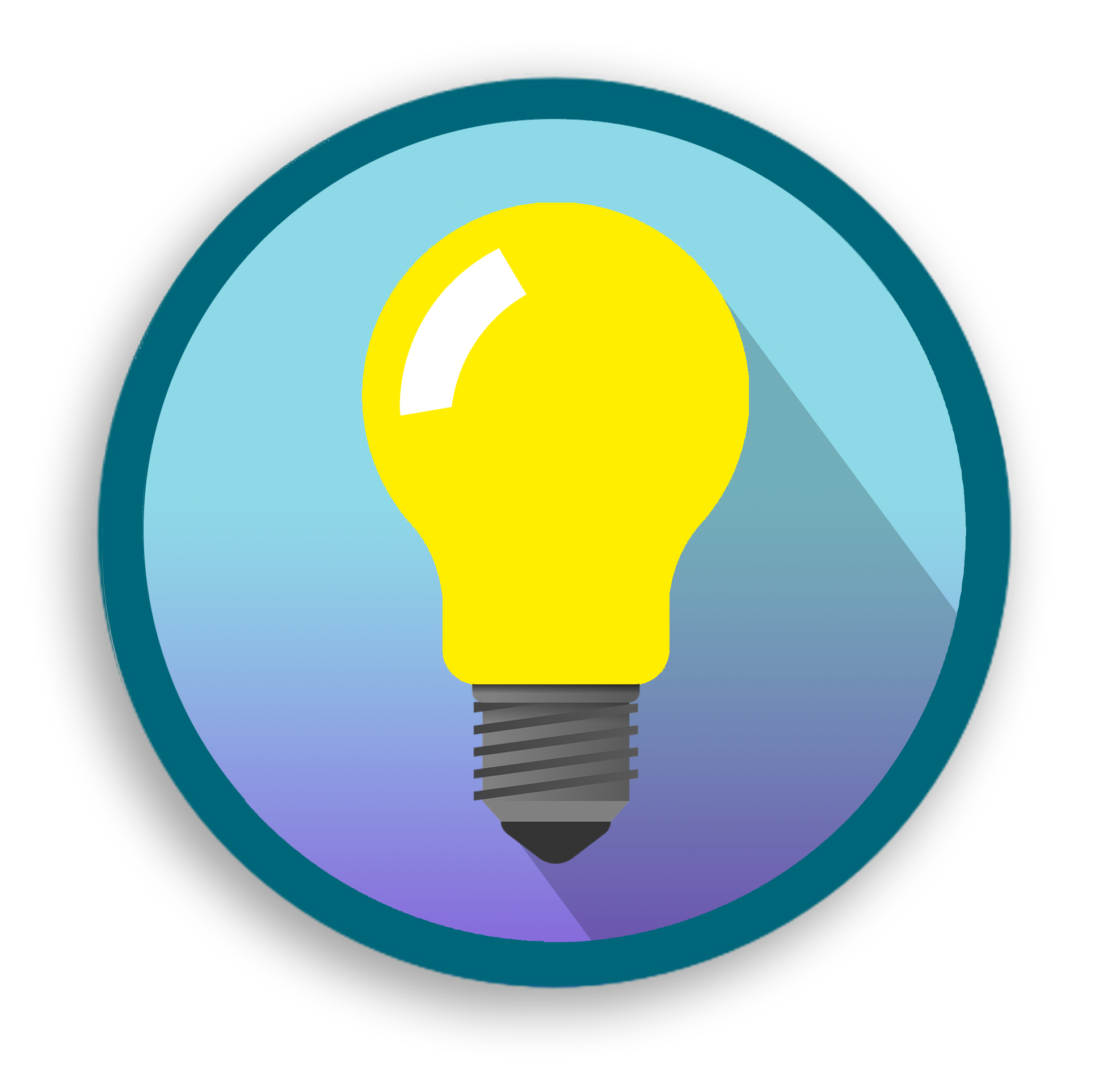
- Don’t say that the BACB licensed you: It’s important to note that there’s a difference between the BACB, which is a credentialing organization, and a licensure board. The BACB provides certifications, not licenses. If you practice in the US and want to learn more, visit the US Licensure of Behavior Analysts web page.
- Don’t say that the BACB is your employer: Please don’t represent yourself as a BACB employee, as it’s a violation of our Terms of Use. We see this most frequently on social media platforms like LinkedIn. Instead, list your certification in LinkedIn’s License or Certification section.
- Don’t modify BACB trademarks: In the past, we’ve seen some funny takes on BACB certification marks, such as “BCBA-CS” for “BCBA consulting supervisor.” While we must give points for creativity, BACB trademarks aren’t a choose your own adventure. Please only use them as intended: RBT, BCaBA, BCBA, and BCBA-D.
How to Address Misrepresentation

Now that you know what to do and why, let’s talk about misrepresentation in the real world: What should you do if you see someone misrepresenting their certification status? What if that person is you?
The first step is to gently correct if possible. If the issue persists, the second step is to report it to all relevant entities (e.g., BACB, licensure board).
You Misrepresented Your Status
Let’s say that while reading this blog, you realized that you’ve been misrepresenting your certification status. Don’t panic! If you can, fix the error. Change your social media bio, revise your resume, contact the website’s administrator, shout your true certification status from the mountain tops—whatever you need to do. If you can’t fix the error yourself, tell your supervisor (if you have one), document your attempts to correct it, and self-report to the BACB through the Ethics Self-Reporting Form. Don’t forget to include your documentation in the submission.
Someone Else Misrepresented Their Status
If you notice that someone else is misrepresenting their certification status, follow the same procedure. First, give them an opportunity to fix the error. Here’s one way to begin that conversation:

“I hope you’re doing well. I just checked out your social media profile, and I’m so excited to see that you’re in a behavior analysis program. I’m not sure if you’re aware, but you can’t represent yourself as a BCBA (or a BCBA in training) until you’ve passed the exam, as it might be confusing. The BACB has clear guidelines on what’s acceptable. Can I share some resources with you, or could we hop on a call to chat about it?”
You don’t have to repeat this word-for-word, but it’s a good start.
If you aren’t comfortable reaching out to this person, or if they fail to fix the error, please report them to the BACB through the Reporting Infringement or Misuse Form. We’ll take it from there.
In summary, to represent your certification status properly, you should follow our guidelines and be as clear as possible when communicating with others. Taking misrepresentation seriously benefits your clients, your employer, and you. If you see misrepresentation in the wild, please take all appropriate steps to address it.
Thank you for taking the time to read this blog post. Your willingness to learn more about these topics helps uphold the integrity your certification. If you have any questions or concerns, please get in touch through the Contact Us Form.
5 Must-Know RBT Application Tips

UPDATED: January 2, 2025
Whether you’re submitting an RBT Initial Certification Application or completing your annual RBT Renewal Application, we understand that time is of the essence. We want you to have all of the information you need for a quick and painless application experience. That way, you’ll feel well-equipped to move forward with your application and to achieve your goals as an RBT.
So, before you click Submit, read ahead for tips on getting started, creating and/or maintaining your BACB account, thoroughly reviewing your documentation, and understanding the key differences between an RBT Initial Certification Application and an RBT Renewal Application.
Tip #1: Consult the RBT Handbook
For all RBT applicants, new or renewing, the RBT Handbook should be your go-to resource. In it, you’ll find helpful information about eligibility requirements, the application process, and requirements for renewing your RBT certification. We also suggest reviewing the handbook with your RBT Supervisor or RBT Requirements Coordinator, as they can help answer any questions you might have.
Tip #2: Give yourself enough time to prepare
This is vital! Because there are many moving parts in the application process, giving yourself ample time to prepare is one of the best things you can do. If you plan accordingly, you’ll have all the time you need to carefully review your materials, which may prevent application errors that cause processing delays beyond the standard 2-week timeline. This is especially important if you’re submitting an RBT Renewal Application. For specifics, check out the following application timelines:
Wondering when you’ll hear back about your application? You can see current application processing times on the Application Processing Updates web page.
Tip #3: Create and/or maintain you BACB account
Your BACB account is the doorway to your certification, and that certification belongs to you and only you. That said, here are a few things to keep in mind when creating and/or maintaining your BACB account:
- Create your BACB account yourself. Don’t have anyone, including your future RBT Supervisor or employer, create your account on your behalf.
- Don’t use your work or school email address when signing up. If you use your work or school email address to sign up, you may lose access to your BACB account if you lose access to that email address in the future. It’s always best to sign up using a personal email address.
- Reach out to the BACB for assistance. If you lose access to your account for any reason, let us know through the Contact Us Form, and we’ll help you access your existing account. Please do not create a new account.
- Keep all of your information current. If your address, name, or other personal information changes, be sure to update your account right away.
- Add bacb.com to your email contacts and list of safe senders. This way, you can ensure that you’ll receive important messages. Also, be sure to check your spam folder periodically, especially if you’re waiting to hear from us.
Tip #4: Carefully review your documentation
When you’re eager to submit an application, it’s easy to accidentally forget a key piece, like a document, attestation, or signature. The problem is that a missing piece can make the application process not-so-easy. If documentation is missing, incorrect, or does not indicate that you meet the necessary requirements, you’ll experience delays in processing times, as the review process starts over each time you resubmit.
To avoid delays as best you can, consider reaching out to your current or future RBT Supervisor or RBT Requirements Coordinator for additional support—and make sure to review these essential documentation requirements:
| RBT Initial Certification Application | RBT Renewal Application |
|---|---|
|
|
| Note: There are 2 versions of the competency assessment. Please refer to the label at the top of the document to ensure that you’re using the correct one. Initial Competency Assessments will not be accepted for a renewal application, as Renewal Competency Assessments require the completion of 5 tasks instead of 3. |
Tip #5: Sit back and relax
When it comes to submitting an RBT Initial Certification Application or RBT Renewal Application, we understand how important it is for you to get an approval as soon as possible so that you can take the next steps in your RBT journey. By following this guidance and enlisting the help of your supervisor, you’ll feel confident that you can submit an approvable application in no time. And don’t forget—we’re rooting for you!
Thank you for taking the time to check out these pointers. For more RBT-related resources, visit our Registered Behavior Technician web page. For questions, please reach out via the Contact Us Form.
The 2022 Transition: What You Need to Know
Please note that the 2022 requirements are now in effect, so some of the information in this blog may be outdated.
On January 1, 2022, certain BACB standards and requirements will change in a big way. Here are the primary changes that you can expect to see:
The Ethics Code for Behavior Analysts will go into effect.
The RBT Ethics Code (2.0) will go into effect.
The new consulting supervisor requirement for first-year BCBAs who provide supervision to BCBA or BCaBA trainees accruing fieldwork will go into effect.
As a BCBA or BCaBA applicant, candidate, or certificant, these changes may affect you. So, we gathered all of our most helpful resources, tips, and tidbits in this one-stop shop for the 2022 transition. Read on for crucial details, a resource bank, and more.
Important Information
Don’t know where to start? First, you should determine whether you plan to apply before or after 2022. If you’re unsure, the following information may help guide your decision.
-
To apply for BCBA or BCaBA certification under the current 4th edition requirements, you must submit an approvable application before January 1, 2022; otherwise, you’ll have to apply under the 2022 requirements.
But what’s an approvable application?
An approvable application is one that contains all of the necessary elements for approval. For example, an approvable BCBA or BCaBA application submitted before 2022 would include the following:
- payment in full
- complete and accurate Final Experience Verification Form(s)
- documentation showing that all coursework content requirements have been met
- proof of an acceptable degree that meets all applicable requirements
- official transcripts with conferral dates sent physically or electronically by the university
It’s important that you also review the BCBA or BCaBA Handbook for a more detailed list of requirements, as forgotten or incorrect elements could cause delays. The BACB expects to see a large influx of application submissions toward the end of the year, so if you plan to submit your application under the 4th edition requirements, please do so as soon as possible.
-
Unless they meet the 2022 supervised fieldwork requirements, experience hours accrued under the current 4th edition requirements will not count toward an application submitted after 2022.
This info is critical for those who have been planning to meet the experience requirements (i.e., those who have been planning to apply in 2021) but will not be able to apply until after 2022. Due to certain requirements changes (e.g., number of contacts), your experience hours might not count toward an application submitted in 2022—even if you accrue additional hours to meet the overall hour requirements. The rule of thumb is that if you’re meeting all of the requirements in place at the time off application, you’re likely on the right track.
Please note that those applying in 2022 should use Monthly and Final Fieldwork Verification Forms. If you’re in this situation, and you haven’t been using Monthly Fieldwork Verification Forms, we encourage you to use them going forward and to maintain documentation showing that you met the supervised fieldwork requirements; this will help you in the event of an audit. Then, once you’ve completed your hours and met all of the relevant requirements, your supervisor should sign off on your completed Final Fieldwork Verification Form.
-
As of January 1, 2022, first-year BCBAs who provide supervision to BCBA or BCaBA trainees accruing fieldwork hours must meet with a consulting supervisor each month in which they provide supervision for the remainder of their first year.
Heads up: This new requirement won’t apply to most BCBAs, including those who have been certified for more than one year, who are providing supervision in 2021, who are not providing supervision to trainees accruing fieldwork, and who are only providing supervision to RBTs or BCaBAs.
That being said, this requirement is important to know, as it may affect trainees who plan to receive supervision from a newly certified BCBA next year. For a more thorough explanation of this new requirement, please review the Consulting Supervisor Requirements for New BCBAs Supervising Fieldwork document.
-
All BCBA and BCaBA examinations will be based on 5th edition content beginning January 1, 2022.
But what if you applied under the current 4th edition requirements and have an open examination authorization going into 2022?
Don’t fret! If you live in the United States, Canada, Australia, or the United Kingdom, your examination authorization period will be valid for its entire two-year duration, regardless of when you applied. For example, if your application was approved in July 2021, you’d be able to sit for your examination until July 2023—or until you ran out of attempts.
The thing to note is that, beginning in 2022, every BCBA and BCaBA candidate will be tested on 5th edition examination content. So, to prepare for your examination, we suggest that you use the relevant 5th edition task list as a guide for your studies
Helpful Tips
- Begin preparing as early as possible. As we’re sure you know, nothing ever seems to go 100% right. Mistakes, delays, and life events happen—so if you haven’t already, we suggest that you prepare for this transition now.
- Reach out to your supervisor(s) and VCS Coordinator, if applicable, to ensure that you’re on track for a successful transition. Trying to submit an application or prepare for an examination at this time might be tricky, so it would be smart to enlist help from someone you trust. It never hurts to get a second opinion, especially from someone with experience.
- Use Experience Verification Forms if applying in 2021 and Fieldwork Verification Forms if applying in 2022. Due to the similarity of these forms, it would be easy to accidentally submit the wrong one—but an incorrect form could result in a delayed or unapproved application. Our advice is to double check all of your submission materials with your supervisor(s). And for additional guidance, check out our Documenting Fieldwork Hours video and Documenting Fieldwork: Helpful Answers to Your FAQs blog.
- If you plan to apply in 2022, don’t begin your application just yet. All applications that are not approvable will be removed from the BACB account database on January 1, 2022. To avoid losing your hard work, please hold on to your application materials and begin submissions after January 1, 2022.
- Before you submit your application, review your materials closely. Did you pay your application fee? Does the BACB ID number listed on your document(s) match the number in your BACB account exactly? Every document, signature, and requirement met matters when it comes to your application, so be sure to dot the i’s and cross the t’s before you click submit.
Key Resources
For in-depth guidance, dive into the following resources that apply to you. It may be helpful to review these with a trusted mentor or supervisor.
- Ethics Code for Behavior Analysts: This updated code lays out the ethics standards that BCBA and BCaBA applicants, trainees, supervisees, and certificants must abide by.
- RBT Ethics Code (2.0): This updated code lays out the ethics standards that RBT applicants, trainees, supervisees, and certificants must abide by. Individuals who supervise RBTs should also become familiar with this code.
Thank you for taking the time to review this resource! We are so excited for all of the positive changes that will come from these updated requirements, and we hope that your transition is as seamless as possible. If you have any questions or concerns, please get in touch via the Contact Us web page.
Documenting Fieldwork: Helpful Answers to Your FAQs

Keeping up with documentation can be hard—but it doesn’t have to be! With a solid plan in place to track your fieldwork, you can rest assured knowing that your fieldwork hours are being accurately documented.
Check out these answers to your frequently asked questions about the fieldwork documentation system, Monthly and Final Fieldwork Verification Forms, and the former Fieldwork Tracker to ensure that you’re set up for success. For more helpful tips, be sure to review the Documenting Fieldwork Hours video.
Fieldwork Documentation System
Q: Who should develop and maintain my documentation system?
A: You and your supervisor can collaborate to develop a documentation system, or you can develop it on your own. However, please keep in mind that regardless of who develops and maintains the documentation system, both you and your supervisor are required to keep copies of all relevant documentation.
Q: Who is responsible for tracking my hours to make sure they meet the requirements?
A: Both you and your supervisor should be tracking your fieldwork hours. At a minimum, your supervisor should review all of your hours for each supervisory period before they sign the Monthly Fieldwork Verification Form. Don’t wait until the Final Fieldwork Verification Form must be signed for your supervisor to review all of your hours!
Q: What might it look like to document my fieldwork?
A: This is a great question—and there’s a lot to consider. Here are a few pointers to get you started, but be sure to check out the Documenting Fieldwork Hours video for an in-depth look at how to best document your fieldwork:
- First, we recommend that you complete the Fieldwork Checklist and Tip Sheet, as it includes helpful guidance on getting started.
- Once you’ve found a qualified supervisor, signed your supervision contract, and established your documentation system, you’ll likely begin accruing hours by performing both restricted and unrestricted activities. You should meet with your supervisor throughout the month to help ensure that you’re gaining the skills necessary to demonstrate competence in applied behavior analysis. You can find a more comprehensive description of acceptable activities in the relevant BCBA or BCaBA Handbook .
- By the end of the month, you’ll want to double check that you’ve documented the total number of individual and group supervision hours you accrued, the total number of supervision contacts that occurred, and the total number of observations-with-clients that took place that month. Don’t forget to document all other relevant information along the way (see the BCBA or BCaBA Handbook for additional information).
- Remember to adjust your fieldwork hours if you did not meet all of the monthly requirements (e.g., contacts, % supervision). Review the Requirements for Supervision of Fieldwork Hours section of the BCBA and BCaBA handbooks for details on how to systematically reduce fieldwork hours in order to meet monthly requirements.
- At this point, you and your supervisor will review the documentation to confirm that all of the requirements for that month have been met. If your supervisor can agree to the listed attestations, they will sign your Monthly Fieldwork Verification Form for that supervisory period. This form must be signed by the last day of the calendar month following the month of supervision, and both you and your supervisor must retain copies.
- Once you’ve completed all of your fieldwork and met all of the requirements, your supervisor will sign your Final Fieldwork Verification Form. When you’re ready to apply, this is the form you’ll submit with your application.
Q: How do I document combined Supervised Fieldwork and Concentrated Supervised Fieldwork?
A: These should be documented on separate forms. Please note that Concentrated Supervised Fieldwork hours have approximately 1.33 times the temporal value of Supervised Fieldwork hours. In your documentation system, you may want to convert your Concentrated Supervised Fieldwork hours to Supervised Fieldwork hours to ensure that you’re on track to accrue all of the hours that you need to apply for certification. Review the Requirements for Supervision of Fieldwork Hours section of the BCBA and BCaBA handbooks for more guidance.
Q: Is the audit process something that I should plan for?
A: Yes! It’s highly recommended that you keep all of your fieldwork documents organized and up to date in anticipation of an audit. If you’re audited, we’ll provide you with an audit log and guidance on what information or time period is being audited. With your documentation system already organized, it’ll be easy to complete the audit log. Feel free to review the Fieldwork Audit Process visual in the BCBA or BCaBA Handbook for more information.
Monthly and Final Fieldwork Verification Forms
Q: I see that the Monthly and Final Fieldwork Verification Forms require a BACB ID. Where can I find mine?
A: Your BACB ID is located in your BACB account. If you don’t have a BACB account, you’ll need to create one. We strongly suggest creating only one account to prevent delays in processing your application. If you experience any issues accessing your account, use the Contact Us Form for assistance.
Q: What should I do if I need to modify a Monthly Fieldwork Verification Form?
A: This one is important! Here’s what you can do:
- If it’s still within one calendar month of the supervisory period, you can create a new version and get all of the necessary signatures.
- If it’s more than one calendar month after the supervisory period has ended, you and your supervisor can make the relevant changes and have everyone involved initial them. Just make sure that your documentation can support the corrected form!
Q: If I lose a Monthly Fieldwork Verification Form, can I still count those hours?
A: Technically, yes. You may submit those hours, but if your fieldwork is selected for an audit, you must have additional documentation that sufficiently verifies the hours that were captured on the lost form. If your documentation is insufficient, those hours may not be accepted, and you may need to complete additional fieldwork.
Q: Can I submit the Final Fieldwork Verification Forms electronically?
A: Absolutely. Please see the Acceptable Signatures Policy for more information on acceptable types of digital signatures. When you apply, you’ll receive guidance on where to submit your forms.
Q: How can I ensure that my Fieldwork Verification Form will be accepted by the BACB?
A: Although we can’t guarantee that a form will be approved, we strongly encourage you to save your Fieldwork Verification Form and then open the saved file to review it. If the file is saved incorrectly and data is missing, your submission cannot be accepted. By reviewing the saved file in advance, you can ensure that your form isn’t missing any information.
Q: If I’m completing a Multiple Supervisors at One Organization Fieldwork Verification Form, should I enter the name of everyone who supervised me at the organization?
A: It depends! Let’s break it down:
- Monthly Fieldwork Verification Form: No. The responsible supervisor is the only one who must be listed on and who must sign the form.
- Final Fieldwork Verification Form: Yes. Anyone from the organization who provided supervision for you must be listed; however, the responsible supervisor should be the only one to sign the form.
Q: How should I determine who the responsible supervisor is?
A: If you’re receiving supervision from multiple supervisors at one organization, you’ll need a responsible supervisor—an individual who ensures that all of the supervisors’ activities are well organized and coordinated. The person who serves in this role must be identified on the supervision contract and must be able to agree to all of the relevant attestations on the Monthly and Final Fieldwork Verification Forms. For this reason, the responsible supervisor who signs the Final Fieldwork Verification Form must have been qualified to be a responsible supervisor for the entire duration of the supervision provided. Anyone who meets those requirements may act as your responsible supervisor.
Q: I’m completing a coordinated fieldwork experience with multiple supervisors, but they don’t all work at the same organization. Can I still use the Multiple Supervisors at One Organization Fieldwork Verification Form?
A: If your fieldwork meets the Multiple Supervisors/Settings requirements outlined in the Supervised Fieldwork Requirements section of the BCBA or BCaBA Handbook, you can use this form. The key is that your coordinated fieldwork experience is completed with a clearly defined Responsible Supervisor who ensures that the activity is well organized and meets all BACB fieldwork requirements.
Thank you for reviewing these Q&As. We hope that they helped you feel more confident in documenting your fieldwork—and we encourage you to continue familiarizing yourself with our documentation requirements. The more you know, the more prepared you’ll be to complete your application and take the next steps toward certification.
Documenting Fieldwork Hours
Documenting Fieldwork Hours
By the BACB
This video covers important information about how to best document your fieldwork hours. Check it out for helpful insight into the supervision contract, ongoing documentation system, Monthly and Final Fieldwork Verification Forms, and beyond.
You can find all of the BACB’s videos on our YouTube channel.
Tips for New Certificants

First things first—congratulations! You met your eligibility requirements, passed your examination, and earned your certification. You just successfully finished what some believe to be the hardest part of becoming an RBT, BCaBA, or BCBA.
But now you’re facing a whole new set of challenges, including maintaining your certification and assuming your new role. To help you start off on the right foot, here are a few tips for your first weeks as a certificant.
Tip #1: Review the contact information in your BACB account
When you earn your certification, it’s important to review your BACB account and update any outdated or incorrect information. Although the BACB strongly encourages applicants to review and update their contact information as changes occur, this tip is especially important once you pass your examination and earn your certification.
But why is this review so crucial?
For one, within 4–6 weeks of passing your BCBA or BCaBA examination, your official certificate will arrive at the mailing address listed in your BACB account—however outdated that address may be. So, to prevent a mailing mishap, be sure to update your home address. Also take care to review your name, phone number, and email address, as outdated or incorrect information in any of these fields may create a problem down the line.
Tip #2: Get familiar with the Certificant Registry
The Certificant Registry is a database that includes vital information about all BACB certificants, including their location; certification number, status, and activation/recertification date; disciplinary actions or sanctions, if any; and availability for supervision services. It’s a valuable resource for employers, service recipients, applicants, and certificants alike, so we recommend getting to know it a little bit better.
As a new certificant, you will not appear in the database immediately. Like your certificant number, which may take up to 24 hours to appear in your BACB account, your name may take up to 48 hours to appear in the Certificant Registry. At that point, your certification information will become public.
Once your information is public, potential employers and supervisors can use the Certificant Registry to verify your certification. You can also use the registry to find and contact supervisors in your area if or when necessary. But be careful—as stated earlier, if your address is not updated in your BACB account, the registry may not reflect your current location.
We encourage you to give the Certificant Registry a try—maybe even search your own name to see how you will appear to others!
Tip #3: Update your resume and curriculum vitae
This tip is as short and sweet as they come, but it’s important nonetheless: Don’t forget to list your new certification on your resume and/or curriculum vitae! Once you enter the working world, you’ll want to ensure that your new title—and all of the hard work that went into getting it—is reflected on paper for potential employers to see.
Tip #4: Research your state’s licensure requirements
If you are a BACB certificant who intends to practice in the United States, you must adhere to your state’s licensure requirements before practicing or billing. This tip may be the most crucial in this list, as ABA practitioners who practice without licensure in regulated states may face serious consequences, such as disciplinary actions against their certification or even incarceration.
Follow these steps to learn more:
- Visit our U.S. Licensure of Behavior Analysts web page.
- If your state is regulated, click on your state in the table to navigate to its regulatory board website.
- There, you can find detailed information about your state’s licensure requirements and applications, if necessary.
Tip #5: Establish a maintenance plan
“There’s no such thing as too early!” – Bird that got the worm
It never hurts to be prepared, which is why it’s a great idea to begin establishing a plan to meet the maintenance requirements for your certification as soon as possible. As an RBT, BCaBA, or BCBA, you must meet specific requirements and complete certain tasks before you are able to recertify. It’s helpful to keep those to-dos in mind and plan ahead to avoid a last-minute panic or, at worst, an expired certification.
To create a maintenance plan, find out the length of your recertification cycle, the continuing education (CE) requirements that you must meet, if any, and the tasks that you must complete within the 45-day period before your recertification date. Then, do your research! Visit the Continuing Education tab in your BACB account to find a summary of the continuing education units needed for your current certification cycle or review the RBT Renewal Competency Assessment Packet—maybe even mark your target milestones on a calendar or planning app.
To get started, check out the following table to see a basic overview of the current BACB maintenance requirements for each certification.
| Overview of Maintenance Requirements | ||||
|---|---|---|---|---|
| Certification | Recertification Date | CE Requirements | Ongoing Requirements | 45 Days Before Recertification Date |
| RBT | 1 year from original certification date | Not applicable |
|
|
| BCaBA | 2 years from original certification date |
|
|
Recertify |
| BCBA/BCBA-D | 2 years from original certification date |
|
Abide by BACB ethics and self-reporting requirements | Recertify |
For more detailed, in-depth information about current BACB maintenance requirements, please visit the RBT, BCaBA, or BCBA Handbook.
Tip #6: Check out the Resources tab in your BACB account
As a new BCBA or BCaBA, you have access to multiple behavior-analytic scholarly journals and databases. These journals and databases may be helpful resources for you as you integrate current research into your behavior-analytic practice activities—and the best part is that through your BACB account, they’re free!
We encourage you to take some time to explore the Resources tab, as spending time in behavior-analytic literature is one of the best ways to stay in the know about advancements in the field. In fact, in a profession that is rapidly advancing, your education will continue long after you pass your examination.
These six tips are not the end-all, be-all of your first weeks as a BACB certificant. No matter how thoroughly you plan and prepare, you will surely run into hiccups and roadblocks at one point or another. That’s simply the nature of doing something new. Even so, we hope that these tips help you more confidently assume your new role.
Thank you for your hard work and dedication to applied behavior analysis. We are so happy to have you as a certificant. Best of luck!
Debunking Myths About BACB Examinations
Note: The information in this blog may be outdated.
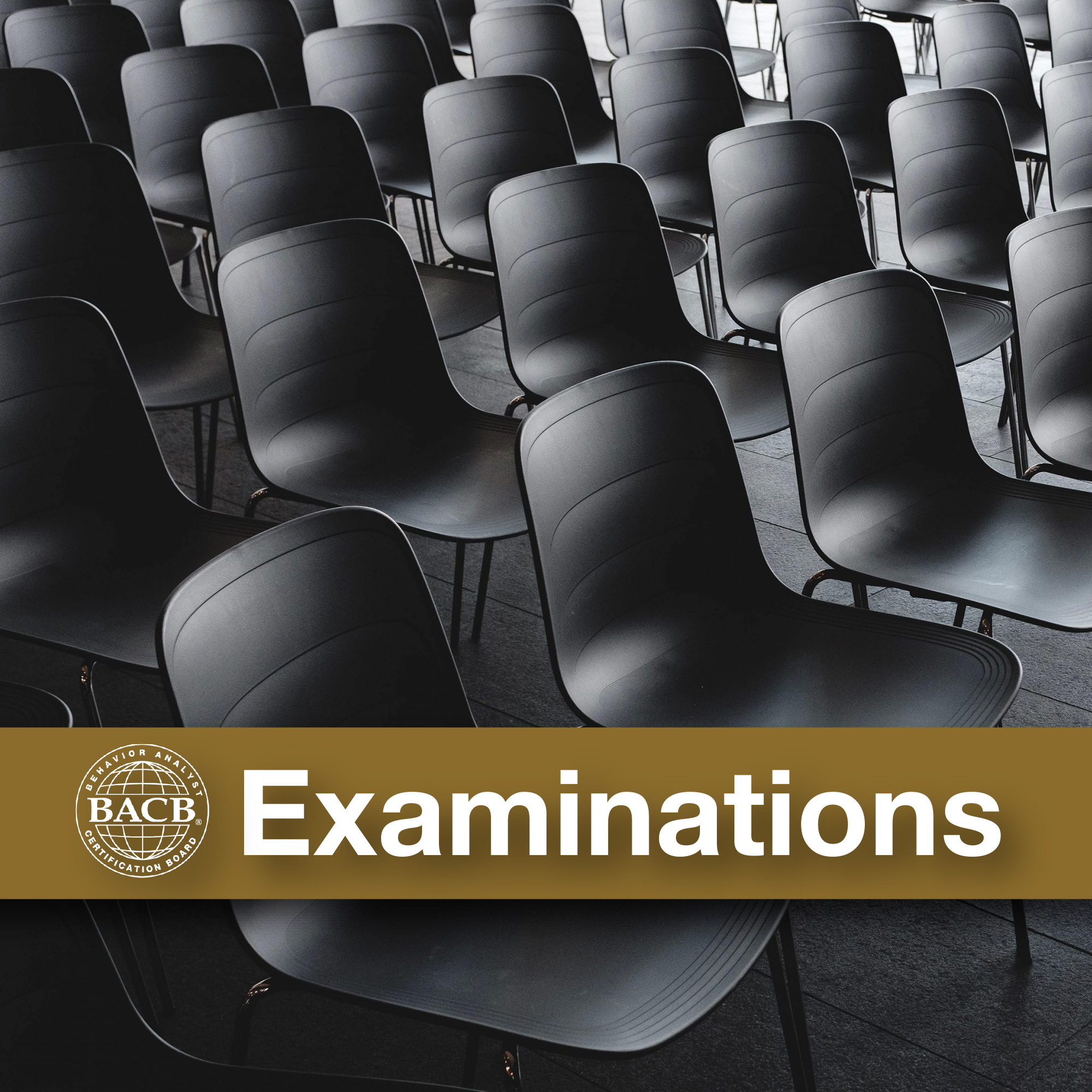
- An effective RBT, BCaBA, or BCBA examination is:
- Reliable
- Valid
- Fair
- Confidential and proprietary
- Informed by the practice of behavior analysis
- All of the above
Knowing the Terms
To better understand how the BACB develops and maintains examinations, it’s helpful to know these terms:
- Criterion-Referenced: Criterion-referenced examinations measure success in relation to fixed requirements set by qualified professionals. The BACB’s examinations are criterion referenced.
- Examination Blueprint: The purpose of an examination blueprint is to provide a structure for the content that will be covered in an examination. Essentially, it’s an overarching arrangement that precisely tracks how the different content components of an examination will be emphasized.
- Psychometrician: An expert in the science of educational and psychological measurement who determines the reliability, validity, and fairness of a test or examination. The BACB works closely with psychometricians, subject matter experts (SMEs), and members of the BACB Board of Directors when establishing examinations.
7 Myths and Clarifications About BACB Examinations
There are many myths surrounding the way examinations are developed and maintained at the BACB. So, in the list below, we break down and debunk some of the most common myths about BACB examinations.
- Myth #1. The BACB created the processes they use to develop and maintain examinations.
- Clarification. The processes used for examination creation and maintenance are based on the best practices used in the measurement, assessment, and testing professions. These processes are widely accepted and practiced in the development of high-stakes examinations.
- Myth #2. BACB staff members write examination questions.
- Clarification. To create examination questions, the BACB consults a panel of SMEs who currently practice applied behavior analysis (ABA). The SMEs write and edit all BACB examination questions.
- Fun fact: Over 100 SMEs helped write and edit BACB examination questions in 2019 and 2020!
- Myth #3. The BCBA and BCaBA examinations are the same, but the BCBA examination has 20 additional questions.
- Clarification.. Although the BCBA and BCaBA examinations are similar due to the overlap in their content and practice requirements, each set of certificants must be tested on this content at a different level of understanding. SMEs who help write and review examination questions are trained to account for the different levels of performance necessary to practice at each certification level. So, while the BCBA and BCaBA examinations may share similar content, they do not share questions.
- Myth #4. The comments testers write will impact their examination scores.
- Clarification. Examination comments do not impact the score a tester receives on their examination. In fact, the comments testers write are only used if a question is reviewed by SMEs at a later time.
- Myth #5. Some examination questions have more than one right answer.
- Clarification. While multiple answers to an examination question may seem correct, there is only one best answer. This is because each question is designed to differentiate between individuals who fully understand the content and those who do not. So, in some cases, subtle details make the difference between a good answer and the best one.
- Myth #6. Examinations get harder with each retake.
- Clarification. Every BACB examination adheres to the difficulty established by a base examination. Each base examination is developed alongside every new version of the examination blueprint and then approved by the Board of Directors. All following examinations developed by the BACB Testing department are statiscally equated to the base examination before they are administered in Pearson VUE testing centers.
- Myth #7. The BACB examinations are norm referenced (i.e., they measure success in relation to a group with like characteristics rather than a set standard).
- Clarification. Every BACB examination is criterion referenced. Criterion-referenced examinations measure success against a fixed standard that was established by a panel of experts using a formal process. This standard does not move or change regardless of the testing group’s characteristics (e.g., training quality, skill level). For example, an entire group of individuals taking the examination on the same day might all pass—or they might all fail. The test taker’s score really depends on the quality of training that they received, not on the skill levels of the other people taking the examination at a given time.
Bonus question: Why don’t we provide scores to individuals who pass the examination?
Many certificants who pass the RBT, BCaBA, or BCBA examination ask to see their raw score afterwards; however, the BACB does not provide raw scores. This is because our examinations are designed to put candidates in two categories: those who have learned enough to safely practice ABA and those who haven’t. Anyone who passes an RBT, BCaBA, or BCBA examination is qualified to practice at their relevant level of certification. So, while we don’t provide your numeric, raw scores after you pass a BACB examination, rest easy knowing that you have met the minimum requirements to practice as a certified RBT, BCaBA, or BCBA.
For more information about BACB examinations, listen to Episode 12 of the Inside the BACB podcast. Happy testing!
Tips for a Smooth RBT Certification Application
Note: The information in this blog may be outdated. Please see the 5 Must-Know RBT Application Tips blog post for up-to-date information.
So, you’ve decided to take your career to the next level and pursue certification as a Registered Behavior Technician, or RBT.
Congratulations! We’re rooting for your success, so we’ve put together some tips that will make the RBT application process as quick and simple as possible.
Tip #1: Read the RBT Handbook in full
This isn’t your everyday Terms of Service agreement.
Before completing your RBT application, it’s important to carefully review the RBT Handbook in full. In fact, we suggest that you review the handbook with the person who will become your RBT Supervisor or RBT Requirements Coordinator, as they will also be involved in the application process.
The RBT Handbook is a vital resource for potential RBT applicants because, among other relevant information, it includes:
- a detailed description of the requirements you must meet to become certified
- an overview of the application process
- the documents that are required when applying
The RBT Handbook should be your go-to resource when applying to sit for the RBT certification examination. If you take the time to review it in advance, you’ll become familiar with each requirement and every nitty-gritty detail, which can only mean one thing: smooth sailing ahead!
Tip #2: Create your BACB account yourself
We get by with a little help from our friends—just not while making our BACB accounts.
Be sure to create your BACB account yourself with your personal email address. Do not have anyone, including your future RBT Supervisor or employer, create your account on your behalf. Also refrain from using your work or school email address when signing up, as you may lose access to your BACB account if you lose access to that email address.
When you create your own BACB account with a personal email address, you will have full access to and control over your account when it’s time to renew your certification down the road. Your BACB account is the doorway to your certification, and that certification belongs to you and you alone!
Tip #3: Thoroughly review your application documentation
Don’t let these be your famous last words: “It’ll be fine. I don’t need to double check!”
Before you click submit, it’s important to double check that your application meets all the documentation requirements expected of RBT candidates. As stated earlier, it’s a good idea to review your application with your future RBT Supervisor. Another set of eyes will help ensure that all the documentation requirements are properly met.
Unfortunately, the BACB has been receiving a high volume of applications with documentation that fails to meet the proper requirements. Here are a few reminders based on the most frequent issues we’re seeing:
- Upload the correct documents into the RBT application and make sure that all necessary pages are included.
- Check that your RBT 40-hour training certificate includes this statement: “This training program was based on the RBT Task List (2nd ed.) and is designed to meet the 40-hour training requirement for RBT certification. The program is offered independent of the BACB.”
- Complete the Initial Competency Assessment within 90 days of submitting your application payment. In this form, make sure that the assessor (and/or assistant assessor):
- completes all applicable fields (e.g., your name, assessor’s name),
- initials all applicable tasks,
- indicates how each task was assessed, and
- signs according to the Acceptable Signatures Policy.
Here are a few reminders that only apply in certain circumstances:
- If the Responsible Assessor for your Initial Competency Assessment determined that the “with a client” waiver was applicable to you during the COVID-19 pandemic, please make sure to merge your COVID-19 attestation and Initial Competency Assessment into one PDF before submitting.
- If the documentation that shows you have met the education requirements is in another language, please make sure to have it officially translated into English before submitting.
In the mad dash to submit your application, it’s easy to accidentally forget a document, statement, or signature. But, if information is missing from your application or if the provided documentation doesn’t indicate that you meet the necessary requirements, you may experience delays beyond the standard two-week processing time.
We recognize how important it is to move through the application process quickly so that you can become certified and move forward in your career. That’s why it’s vital to double check that your documentation is complete and meets the appropriate requirements for RBT candidates. That way, we can send you off to sit for the RBT examination as soon as possible!
To view current application processing times, please visit the Customer Service Updates page on the BACB’s website.
Tip #4: Hang in there
The path to certification can be stressful and difficult at times, but being fully prepared can ease the pressure. If you take this advice and reach out to your supervisor for additional support when you need it, the application process will feel relatively painless and far less daunting. We sincerely hope that these tips improve your RBT certification application experience. Best of luck, future RBT!
5 BACB Resources You May Not Know About
Note: The information in this blog may be outdated.

Finding a specific piece of information online isn't always the easiest task. And sometimes you aren't even sure what you're looking for until you find it.
Whether you're already certified as a behavior analyst or researching your career options, the BACB website can be a valuable resource. But you may not have discovered these five time–saving gems yet.
Knowing the Numbers
When you're considering a career in behavior analysis, it's important to look at the big picture. Understanding the growth curves for RBTs, BCaBAs, and BCBAs can give you the confidence and insight to make informed choices about which certification is appropriate for you to pursue.
That's why the BACB publishes certificant trends on its Certificant Data page. You can quickly find answers to these questions:
- How many people hold certification at each level?
Our graphs show current and historical data that can help you evaluate the number of new professionals that the BACB certifies each year. - How fast is each certification program growing?
These same graphs tell a story about the growth trajectory of each certification program. For example, by looking at the data, you can see that the number of certified RBTs has grown from 328 when it was introduced in 2014 to 71,875 in 2020. That enormous jump shows a fast–growing demand for credentialed RBTs. (Check out the Certificant Data page to see stats for BCaBAs and BCBAs.)
Staying Informed About Ethics
Understanding ethics requirements is a vital part of the profession of behavior analysis. That's why the BACB is scaling up the resources on its Ethics page.
You may already be familiar with the Ethics Code for Behavior Analysts, which outlines what behavior analysts must do—and must not do—to best protect clients and others. The Code provides guidance on many ethics–related situations you may encounter as a behavior–analytic practitioner, such as:
- avoiding conflicts of interest.
- maintaining confidentiality.
- using contracts and fees.
- implementing behavior–change programs.
- acting as a supervisor.
But there's much more to the BACB ethics resources than the Code documents. You'll also want to check out the following important sources of support for navigating ethics dilemmas.
Ethics Resources
In this section, you can access:
- Ethics–Related Newsletters
The BACB newsletter has delivered critical content to applicants and certificants since 2004. Under Ethics Resources, we've listed and linked to every newsletter that includes ethics information. - Ethics–Related Journals and Books
Our behavior analysis ethics bibliography will save you time and legwork. - Common Code Violations
Knowing about the common ethics violations is invaluable when supervising activities and for understanding policies within organizations. You'll find the most common ethics violations for 2018 and 2016–17 under Ethics Resources.
Reporting to the Ethics Department
If you need support in deciding whether to report a violation, you'll find what you need in this section, including:
- what you should know about submitting a Notice of Alleged Violation.
- how to submit ethics forms.
- the timeline for each step of reporting alleged violations.
- how to self–report.
Code–Enforcement Procedures
To learn about the steps that the BACB can take against someone's exam eligibility or certification, take a look at this section. The Code–Enforcement Procedures is your go–to resource, but you'll also see information about the types of and possible outcomes for disciplinary sanctions.
Ethics touches every aspect of a behavior analyst's professional life. The BACB's extensive ethics resources will help you obtain and maintain your certification so that you can continue changing lives.
Finding Your Behavior Analysis Subspecialty
The profession of behavior analysis is known primarily for its success in treating individuals with autism spectrum disorder and developmental disabilities. However, behavior analysis also offers opportunities in a variety of other subspecialties. Staying aware and knowledgeable about these other areas as the profession grows is a good strategy for anyone researching a career in behavior analysis.
An RBT, BCaBA, or BCBA might work with a variety of clients, including:
- patients in mental health clinics.
- children or adults with developmental disabilities.
- children and teenagers in school settings.
- older populations in their homes or in care facilities.
- organizations that need guidance with safety, leadership, or performance.
To learn more about areas that would interest you, the BACB has published a library of informative videos and fact sheets focusing on a wide range of behavior analysis subspecialties.
Each BACB video features a subject matter expert who shares details about working in the subspecialty, such as problems a behavior analyst might treat and the science behind those methods. For example, if you like the idea of helping to improve performance in the workplace, you can learn about organizational behavior management (OBM) from Dr. John Austin, a leading expert in the field. He shares how research has shaped the industry and allowed OBM practitioners to empower employees and leaders for success.
If you want to see a snapshot of each subspecialty and associated sub–areas with resources and recommended reading, check out our handy Subspecialties Areas document.
Staying in the Know
We know that waiting is one of the hardest parts of obtaining certification, especially when submitting applications or other electronic documents. That's why our Customer Service team shares daily updates about processing times on the BACB website. Our team processes materials in the order they are received, so you can be sure we'll get to yours as soon as possible.
For example, if you submitted your renewal application electronically on May 20th, you can check the Customer Service page regularly to see if we're processing materials received on that date yet.
In addition to processing times, you'll see instructions for system errors or notifications related to your BACB account.
Still haven't found what you need? The Customer Service page also includes links to frequently accessed resources for each certification, such as renewals, requirements, and applications.
Taking Advantage of the Data
The BACB Resources page provides a wealth of information about job demand, BACB activities, past ethics violations, and much more. Here's what you'll find:
- Employment demand for behavior analysts
When you're researching a career in behavior analysis, it can be helpful to investigate state–specific data. The BACB provides two reports showing demand for behavior analysts from 2010 to 2019 and from 2012 to 2014 by state. - Ethics violations data
While the BACB Ethics page is the go–to source for ethics requirements and violations, you'll find unique information on the BACB Resources page. A Summary of Ethics Violations and Code–Enforcement Activities: 2016–2017 tells you what kinds of code-enforcement activities occurred during the two years after the Ethics Code was released. - BACB–authored publications
Check out numerous journal articles related to the profession of behavior analysis, including history, requirements, training, education, and much more.
Finding the right links, documents, and data doesn't have to be an accident. Bookmark these indispensable BACB resources to stay in the know and save time.

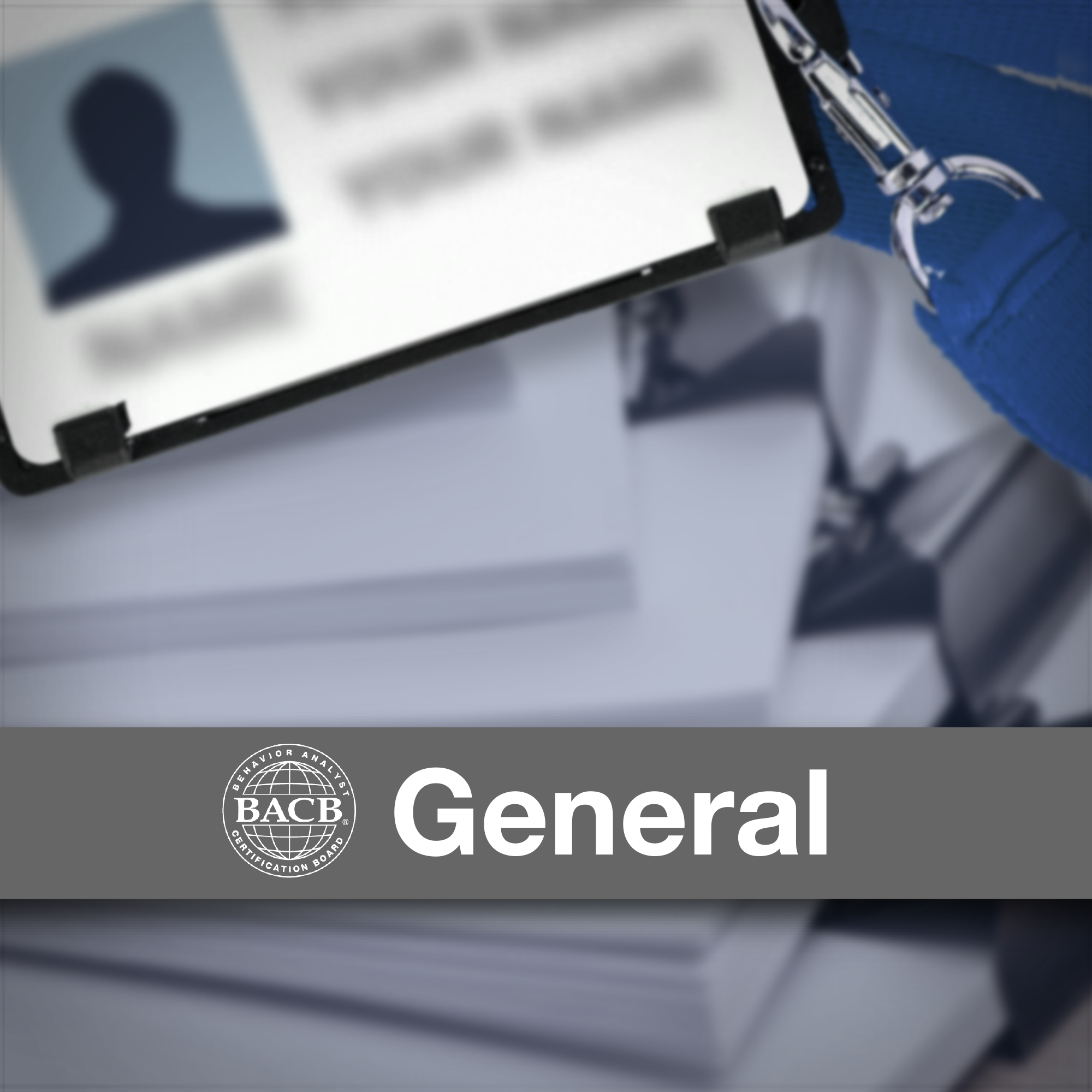
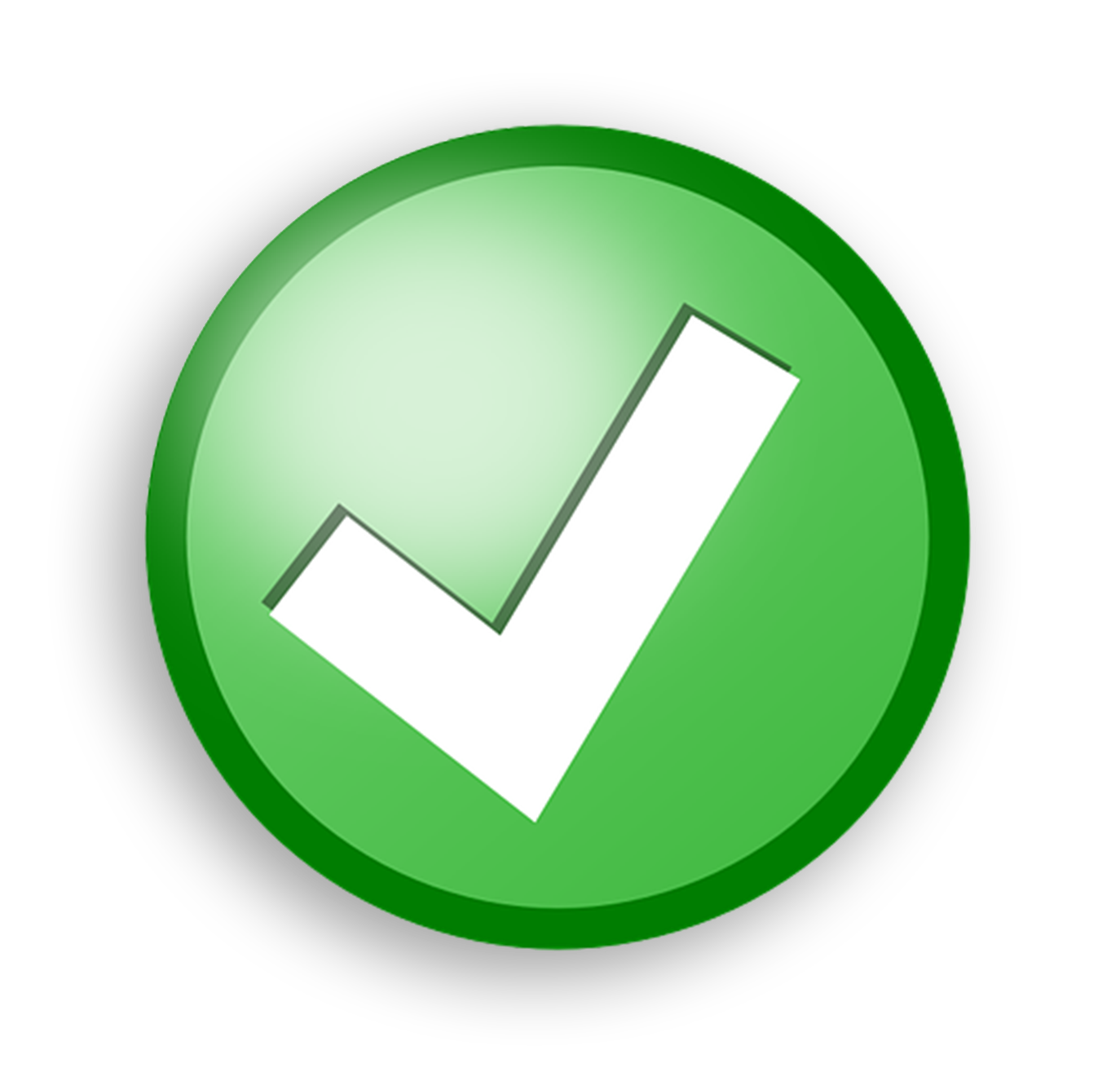 Represent yourself in the following ways:
Represent yourself in the following ways: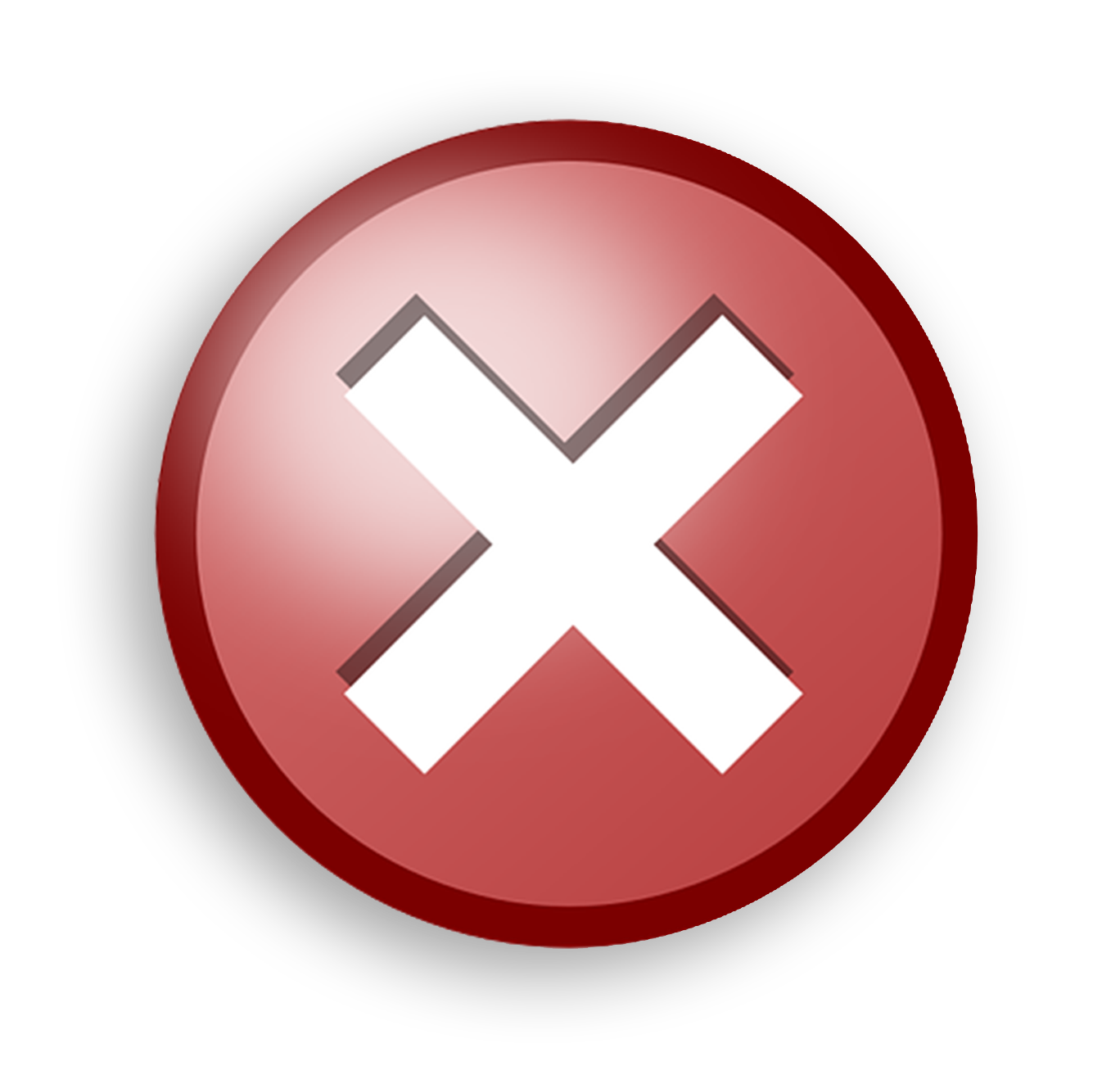 Do not represent yourself in the following ways:
Do not represent yourself in the following ways: